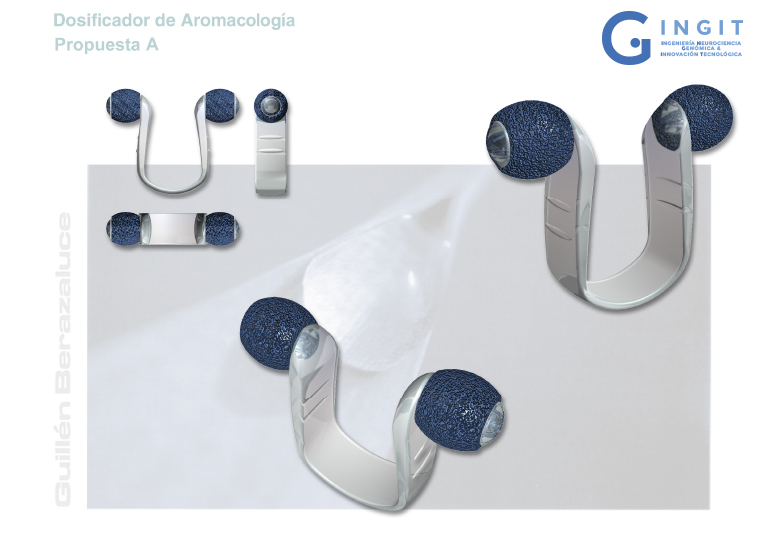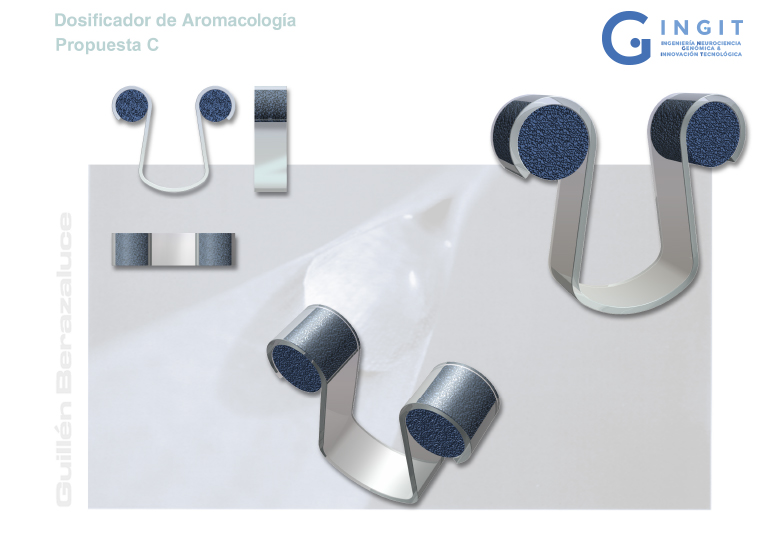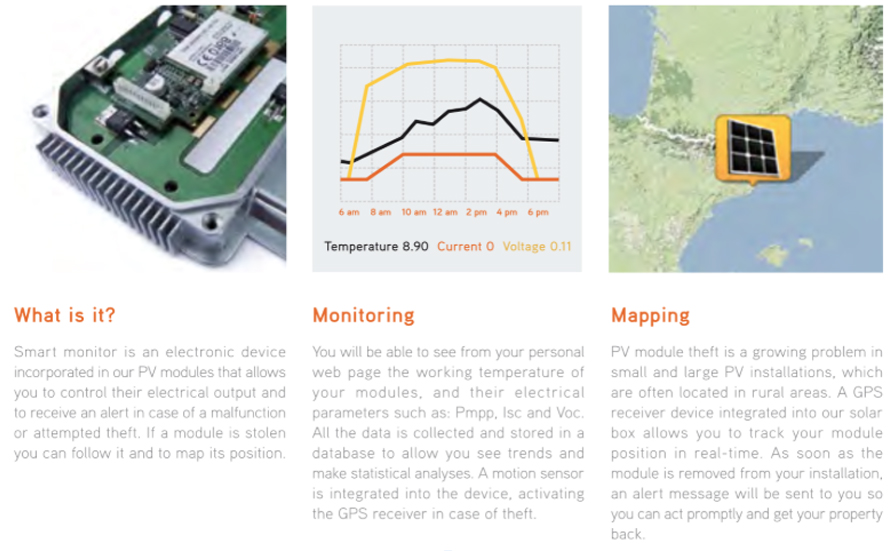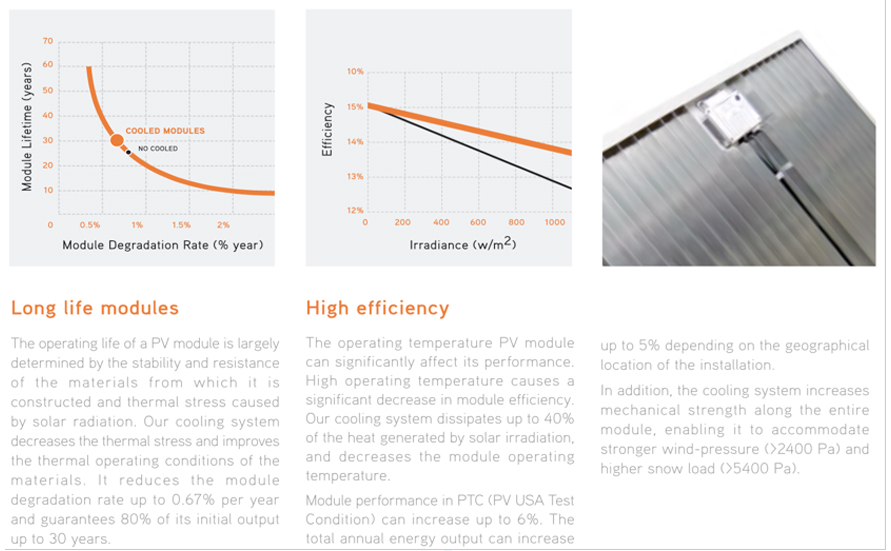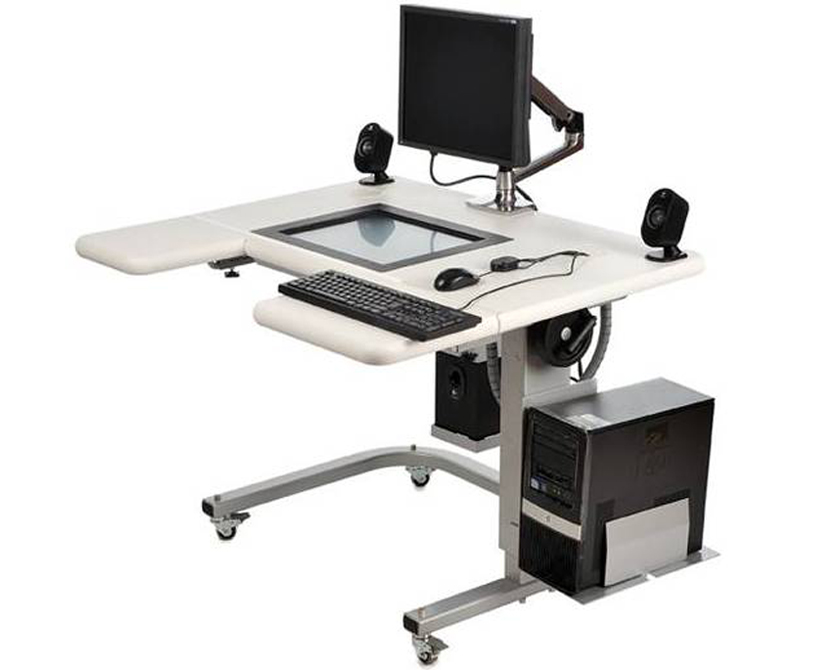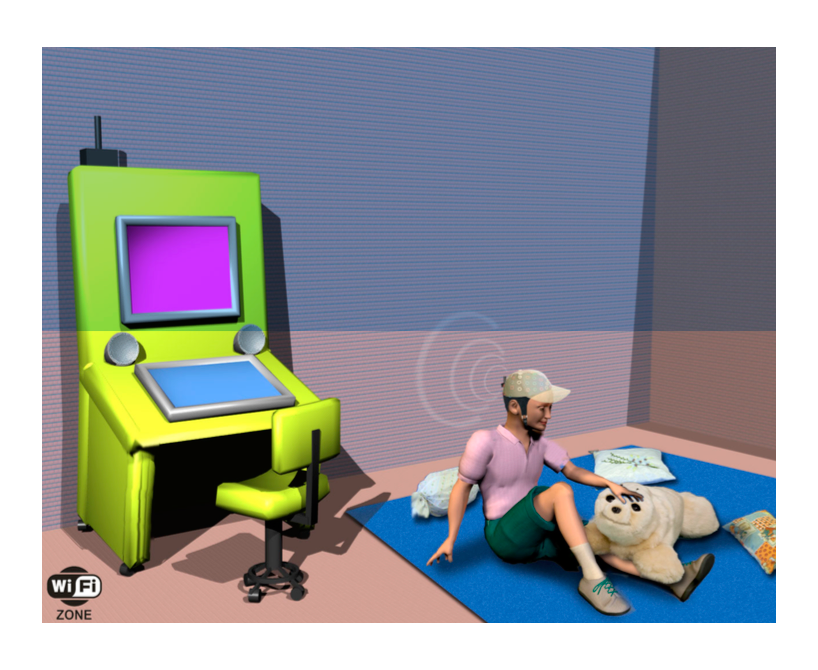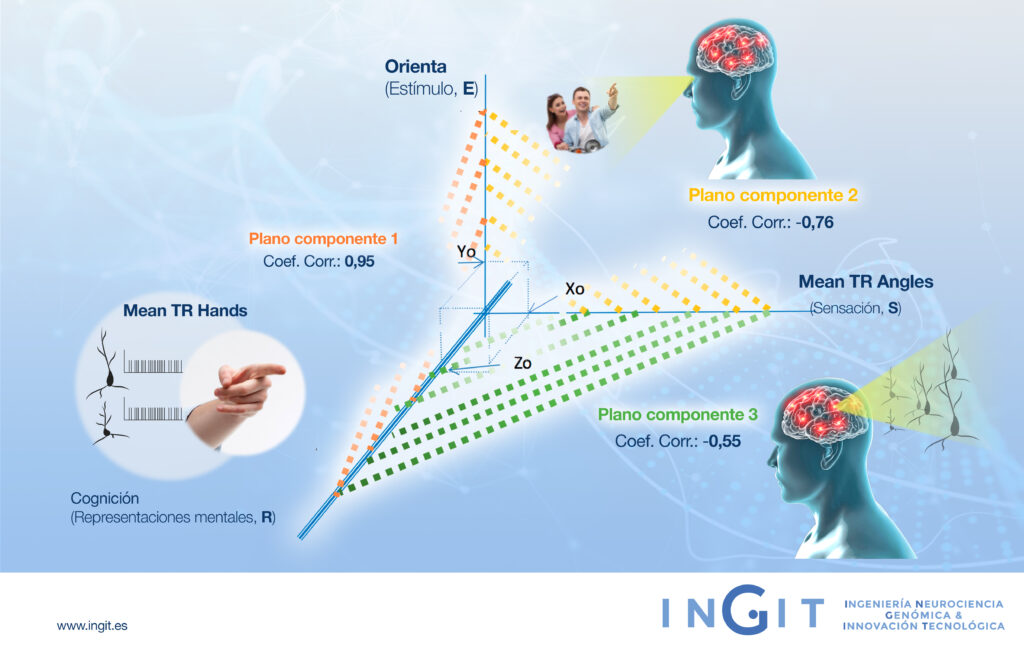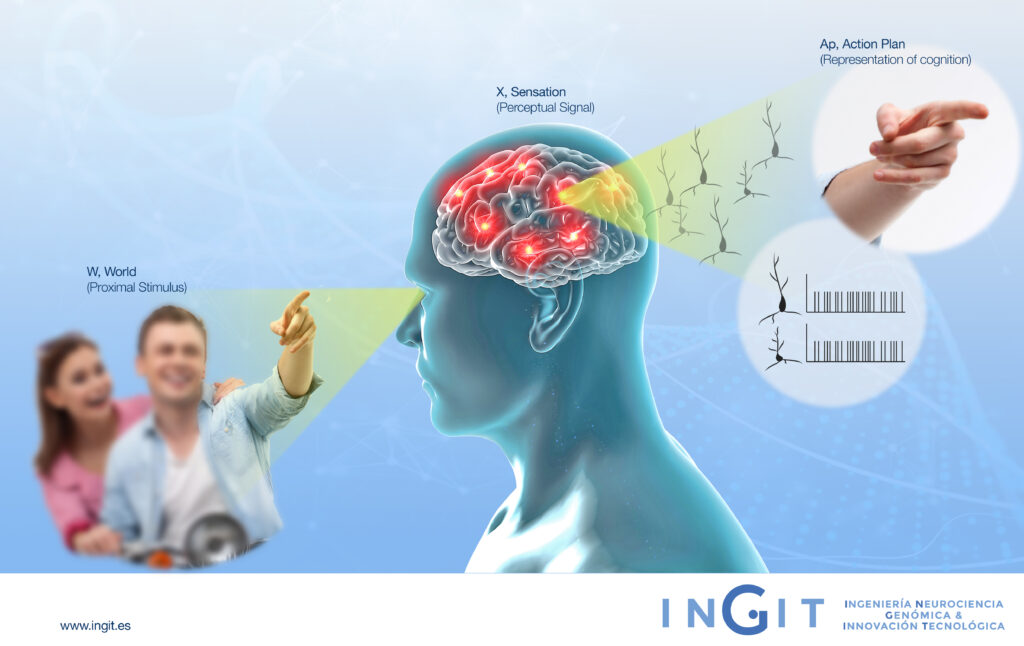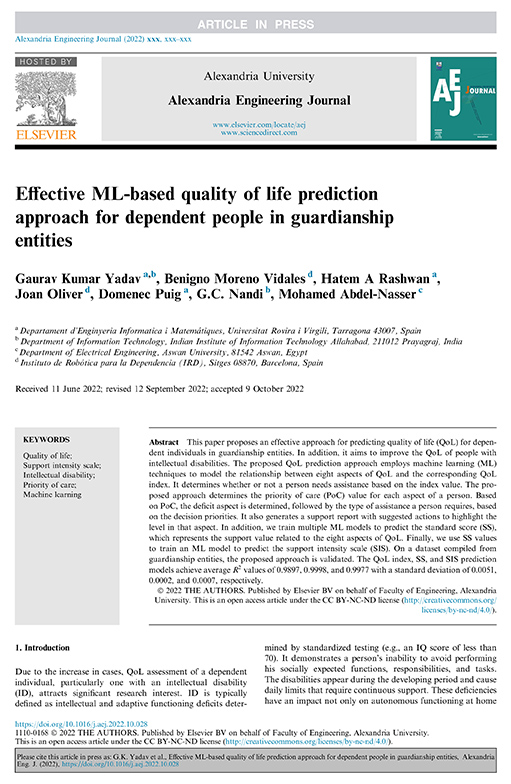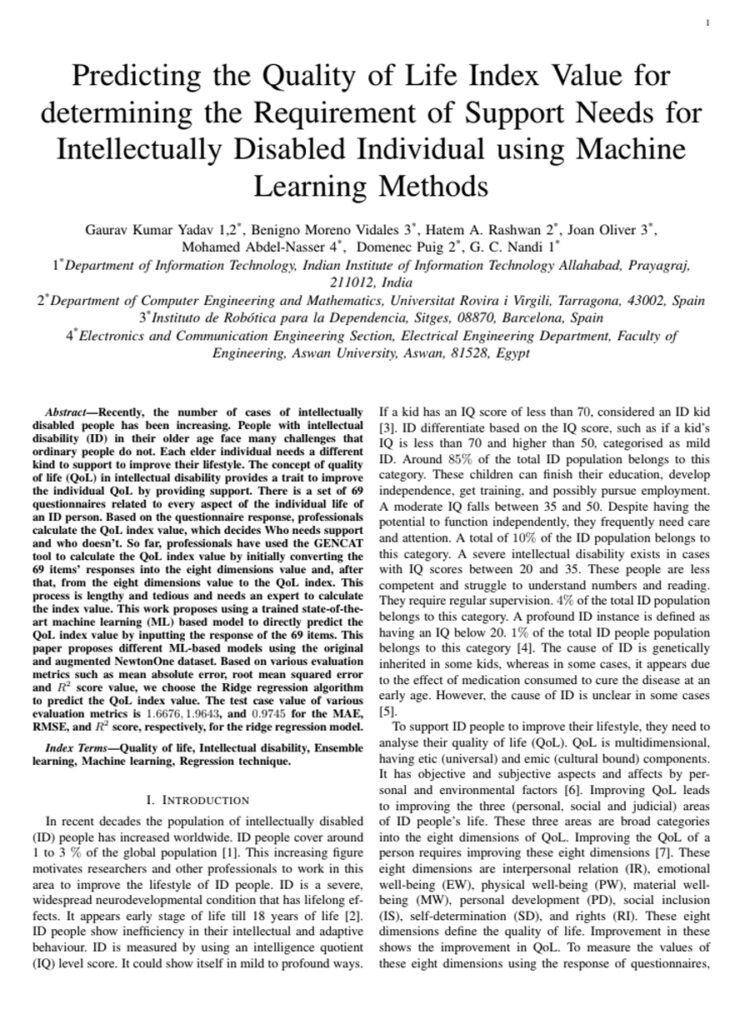
Engineering and Information



1- Medical devices
1.1 Automatic Drug Dispensing Mobile Unit
The purpose of the device for the distribution of drugs is to overcome the drawbacks of the devices currently used in this procedure, by providing a device that enables a correct distribution of drugs, with a resistant external body and without risk of errors.
This device consists in a mobile unit intended to be transported by a nurse to personally deliver to each patient his/her corresponding doses, and it comprises at least one loading element designed to store in an orderly manner a plurality of packages in unit doses identified with a microchip and containing the corresponding doses of medicines. Each loading element is associated with a different patient, and there is a means for identifying each patient and nurse, as well as control elements which include:
- A receptor device that captures information wirelessly from a central computer of the medical centre or a server to which the centre is connected and that also captures by radiofrequency the signal emitted from the microchip present in the unit dose.
- A computer that receives this signal, verifies the medication assigned to the patient and identifies the corresponding unit doses through their microchip, and finally sends a signal to supply the nurse with the corresponding packages in unit doses.
1.2 Nasal Prosthesis for Aromatic Inhalation
The designed inhaler device enables the application of an aromatic product in a personalized way on the user’s own nostrils.
The device is embodied in a support that forms a kind of clip, plastically deformable, which can be “clipped” to the nasal septum by a slight pressure. This clamp has a laminar body, preferably made of plastic, with an omega shape, with the particularity that the ends of its lateral branches are facing outwards, forming two small clamps or complementary fixings where the respective impregnators, soakers or porous capsules are established, such as cotton flakes or any other spongy or porous material capable of constituting the physical support for the aromatic and/or therapeutic product used.
2.0 Photovoltaic Modules
2.1 Photovoltaic panel with intelligent connection
The photovoltaic panel is provided with a plurality of photovoltaic cells and comprises a GPS tracking device on the rear part whose power supply input terminals are connected to the photovoltaic cells, so that it is possible to know at all times the position of the 60 cells, and especially to know if these are being moved and, once they are stolen, it is possible to locate and recover them. Furthermore, since these panels are supplied with the GPS tracking device previously connected to the photovoltaic linked cells, the device is energetically autonomous, and it is not necessary to make additional connections to supply it with power.
Additionally, this panel is designed to receive signals with information regarding operating parameters of this panel, measured in real time, and emit them through it, with which it is possible to monitor its functioning remotely. This allows to perform an optimal maintenance and even to perform its predictive maintenance, without requiring any additional monitoring wiring.
One of these parameters is the average temperature of at least one of the cells. Thanks to that, the operating status of the panels can be indirectly known.
Finally, the photovoltaic panel comprises a current converter-adapter located between the terminals.
2.0 Photovoltaic Module
2.2 Photovoltaic panel with radiator and dichroic reflector
This module comprises a prismatic-shaped sheet whose section is a parabola that extends repetitively on both sides through parallel flat surfaces.
The two laminar embodiments of repetitive shape are simple to manufacture and, with them, a considerable increase in efficiency is achieved, either by reflection capture or by heat evacuation.
Preferably, the reflector is constituted by several units ensembled together. This way, since it is supplied in a modular manner, it can be adapted to different module widths.
Advantageously, the reflector and the aforementioned shapes are made of aluminium or other metallic components with a reflective surface finish.
Ideally, the heat dissipation mechanisms are made of an element that has the same shape as the reflector, so the reflector and the heat dissipator can be obtained by the same manufacturing process and with the same width. This feature is very advantageous since it reduces considerably the manufacturing costs of the ensemble.
Advantageously, the reflector is obtained by matrixing, molding, extrusion or pressing, processes that are adapted to obtain those shapes.
Preferably, in the photovoltaic module the reflector or dissipator element comprises a reflective or dissipative surface treatment, so that after obtaining the shape, its surface finish is adapted according to the function that it will finally have in the module.
3.0 Essay: The iconic dimension. A new quantified information extended model.
Below is a proposal in which a neuropsychological model is established on the basis of mental representations (equivalent to the <mental images>, but as an explicitly more generalized concept and respective to any type of perception), which are treated as a generic and central component of a functional emergence of mental activity in the brain. Such emergence, called in some cases part of the <difficult or hard problem> of consciousness, is approached with a contextualization as a psychophysical variable, in a revised sense, in the biological context of the brain and an orientation towards the explanation of consciousness through the conception of the iconic dimension.
Neuroscience and Psychology
1- Cognitive Stimulation Station
“Armoni” was created between 2007 and 2012; with the collaboration of institutions and professionals, with the aim of generating activities applicable to the world of ICT (Information and Communication Technology), which were, until then, nonexistent for people severely affected at a cognitive and/or motor level.
This adapted computer environment was created for the cognitive stimulation of people with intellectual disabilities so that, through activities, users could enjoy leisure time and, at the same time, enhance their cognitive abilities, working and evaluating 11 different cognitive functions.
Armoni is a program designed to be used in educational and residential environments, as well as for its complementary use in individual therapies.
2- Brain Computer Interfaces: Psychology and Pragmatic Perspectives for the Future. Ray Adams, Gisela Susanne Bahr and Benigno Moreno. AISB 2008 Convention Communication, Interaction and Social Intelligence 1st-4th April 2008.
Whilst technologies such as psychophysiological measurements in general and electroencephalograms (EEG) in particular have been around and continually improving for many years, future technologies promise to revolutionize the emerging Information Society through the development of brain-computer interfaces and augmented cognition solutions. This paper examines critical psychological and pragmatic issues that must be understood before these technologies can deliver their potential well. Within the context of HCI (Human-Computer Interaction), we examined a sample (n = 105) of BCI (Brain Computer Interfaces) papers and found that the majority of research aimed at providing communication and control resources to people with disabilities or with extreme task demands. However, the concepts of usability and accessibility, and respective findings from their substantial research literature were rarely applied explicitly but referenced implicitly. While this suggests an increased awareness of these concepts and the related large research literature, the task remains to sharpen these concepts and to articulate their obvious relevance to BCI work.
3- Sensory-Cognitive Interaction in the Visual Domain. Model of a Three-dimensional Cognition System (STC)
The following objective was set: to study the influence of a cognitive process (decision time) and a sensory process (time of discrimination), on the internal representational system. To this end, two experiments focused on the Mental Rotation of Images and the Discrimination of Oriented Angles were designed, using the method of constant stimuli under the 2AFC (Two Alternatives Force Choice) procedure. In addition, the Vivacity of Mental Images was measured (VVIQ: Test that measures the ability to manipulate internal representations). With this objective, oriented stimuli (hands or angles) were used and psychophysical methods were applied (chronometric function and psychometric function).
We pose the conjecture of the existence of three planes that conform the cognition (psychological plane), the sensation (physiological or psychophysical plane) and the stimuli (physical plane), which are determined by the bivariated relationships between stimulus-sensation, stimulus-cognition and sensation-cognition.
The physical plane is determined by the variable “orientation of the stimulus” (hands or angles), being presented in: 0 °, 45 °, 90 °, 135 ° and 180 °. The cognitive plane is indicated by the decision time in a task of mental rotation of hands. And the sensory (physiological) plane is assessed by the time of discrimination (chronometric function) or by parameters derived from the Fechnerian psychophysics (PIS, DIQ, kWeber).
4- Effective ML-based quality of life prediction approach for dependent people in guardianship entities.
This paper proposes an effective approach for predicting quality of life (QoL) for dependent individuals in guardianship entities. In addition, it aims to improve the QoL of people with intellectual disabilities. The proposed QoL prediction approach employs machine learning (ML) techniques to model the relationship between eight aspects of QoL and the corresponding QoL index. It determines whether or not a person needs assistance based on the index value. The proposed approach determines the priority of care (PoC) value for each aspect of a person. Based on PoC, the deficit aspect is determined, followed by the type of assistance a person requires, based on the decision priorities. It also generates a support report with suggested actions to highlight the level in that aspect. In addition, we train multiple ML models to predict the standard score (SS), which represents the support value related to the eight aspects of QoL. Finally, we use SS values to train an ML model to predict the support intensity scale (SIS). On a dataset compiled from guardianship entities, the proposed approach is validated. The QoL index, SS, and SIS prediction models achieve average R2 values of 0.9897, 0.9998, and 0.9977 with a standard deviation of 0.0051, 0.0002, and 0.0007, respectively.
2022 THE AUTHORS. Published by Elsevier BV on behalf of Faculty of Engineering, Alexandria University. This is an open access article under the CC BY-NC-ND license
You can open the full document by clicking on the image.
4.1- Predicting the Quality of Life Index Value for determining the Requirement of Support Needs for Intellectually Disabled Individual using Machine Learning Methods.
Recently, the number of cases of intellectually disabled people has been increasing. People with intellectual disability (ID) in their older age face many challenges that ordinary people do not. Each elder individual needs a different kind to support to improve their lifestyle. The concept of quality of life (QoL) in intellectual isability provides a trait to improve the individual QoL by providing support. There is a set of 69 questionnaires related to every aspect of the individual life of an ID person. Based on the questionnaire response, professionals calculate the QoL index value, which decides Who needs support and who doesn’t. So far, professionals have used the GENCAT tool to calculate the QoL index value by initially converting the 69 items’ responses into the eight dimensions value and, after that, from the eight dimensions value to the QoL index. This process is lengthy and tedious and needs an expert to calculate the index value. This work proposes using a trained state-of-theart machine learning (ML) based model to directly predict the QoL index value by inputting the response of the 69 items. This paper proposes different ML-based models using the original and augmented NewtonOne dataset. Based on various evaluation metrics such as mean absolute error, root mean squared error and R2 score value, we choose the Ridge regression algorithm to predict the QoL index value. The test case value of various evaluation metrics is 1.6676, 1.9643, and 0.9745 for the MAE, RMSE, and R2 score, respectively, for the ridge regression model.
Index Terms—Quality of life, Intellectual disability, Ensemble learning, Machine learning, Regression technique.
You can open the full document by clicking on the image.
Genomics and Complexity
1- Essay: Revolution and stasis in nature. Notions of complexity.
Primates emerged in Africa and then migrated all over the Earth, but their appearance is recognized in that continent.
This <appearance> refers to the “technological men”, in which the << homo habilis >> shaped their stone tools with other stones, a time when silex could be a knife, an arrowhead and a spear, and this all culminated in the origin of the first sparks of fire and the ability to provoke it at will.
The culture, the industry, the operative knowledge, have never left us, because they allowed us to deepen, with our discoveries, into the environment, into the universe of things.
At first, the growth of consciousness was gradual and dispersed in time, and the humankind was probably amazed by its own achievements in every step. This happened again when abstract knowledge appeared, separated from the tangibility of things, which entailed an abrupt second start for that human being, probably with the acquisition of the symbolic capacity, a new territory.
Technological and Heuristic Innovation


Innovation Award 2006, BCN College of Engineers
THE BARCELONA AUDITORIUM
The Day of Profession brings together more than 1,200 people in the Auditorium 15.11.2006 (abstract)
The College of Engineers lived its great day on Tuesday: the presentation of the CETIB Awards for Engineering-Society, the presentation of the magazine Tecnodebats and the recognition of the work of the NGOs that had received the CETIB development financial aids. The event, which took place in the Auditorium of Barcelona and was enlivened with live music and magic performances, brought together more than 1,200 people.
The runner-up prize to the Award for Best Innovation Work was given to the Drug Dispensing Unit in unit-doses with identification by a radio frequency microchip from Benigno Moreno. The award-winning device prevents the mistakes that can appear when administering medications chronically in residences for the elderly, people with intellectual disabilities or people with mental illnesses. Thanks to this device it is possible to automatically associate the patient with his/her corresponding medication and dose.
(Theknos Magazine of the CETIB)
Conference: My school: a company, an organization.
My classroom: the company, an organization: The cultivation of the essential illusion and operability, curiosity and amazement, knowledge and consciousness.
Benigno Moreno Vidales
General Director of SAP Solar-Heliene, collaborator as a researcher in medical devices in the A.M. Foundation of intellectually disabled people, member of the Board of Trustees of the Robotics Institute for Dependency, holder of a master’s degree and Engineer from the UPC.
My school, a company. My classroom, the department to which I belong in that company: a human group seeking to generate value and bring it to the world. The learning of students, or the services and products in a company, are the value that organizations bring to society, to the market, to the world.
In addition, those who generate all this, live in the success and in the failure, among students, services and products. At multiple levels and experiences: consensus, rupture, union and collision. All of this is because they are different from each other.
And this is how we are. We are diversity, both for the agreement and for the disagreement. But we accumulate “vital experiences”, which guide a culture of illusion, operability, curiosity, amazement, knowledge and consciousness. This makes us grow.
But how has that growth come about?
Thanks to what we have cultivated. Thanks to the culture. These icons that guide and form the house of our thoughts and behaviour. They are formed by assumed mental and cultural representations. And they are this way because they are believed based on one’s experience. And this is how they shape us, and they also bring us together (alas!) and confront us.
The understanding of this iconosphere that surrounds each social subject, and conforms it, can allow us to understand, tolerate, respect, and complete ourselves; and being aware of this can guide us: from art to human disciplines, and from them to sciences, in a continuous circle.
And in this mixture of success, failure and growth, we can be “entrepreneurs, rebels, adventurers, nonconformists and idealists”, to be able to (like Shackleton, or Edison or Newton) reach the world by giving something genuine with value and that, finally, belongs to us and to all, persisting over generations.
Link to the conference at the University..
Pdf to download: The world of classroom life – Business and life


